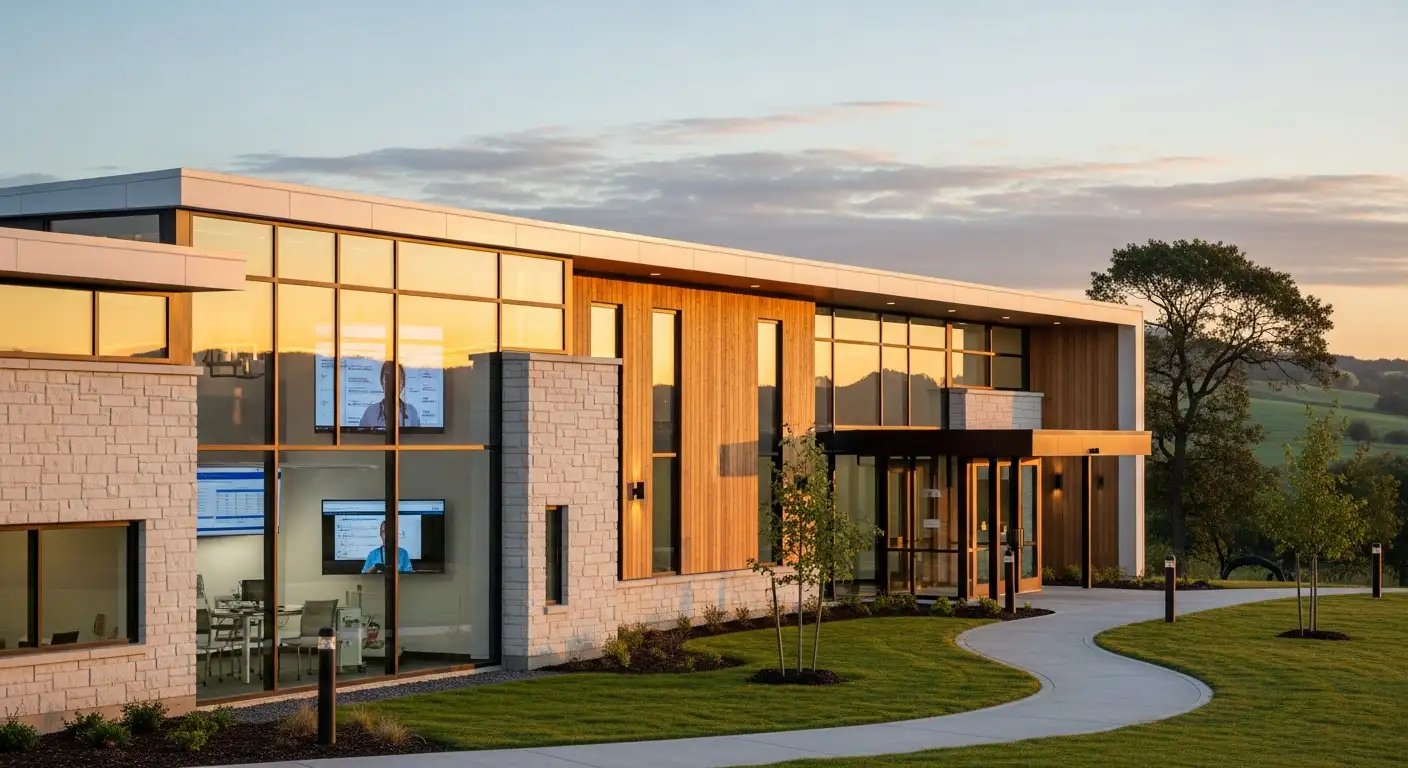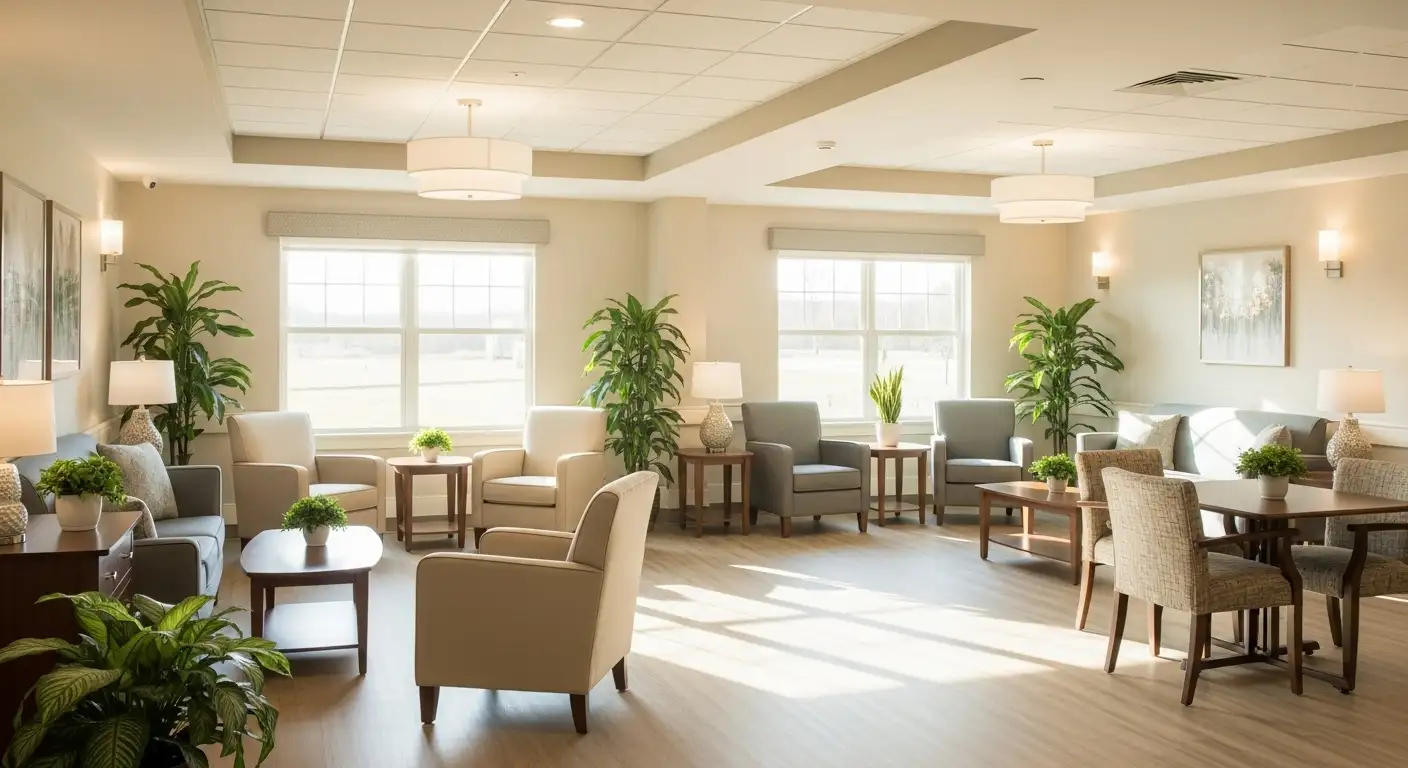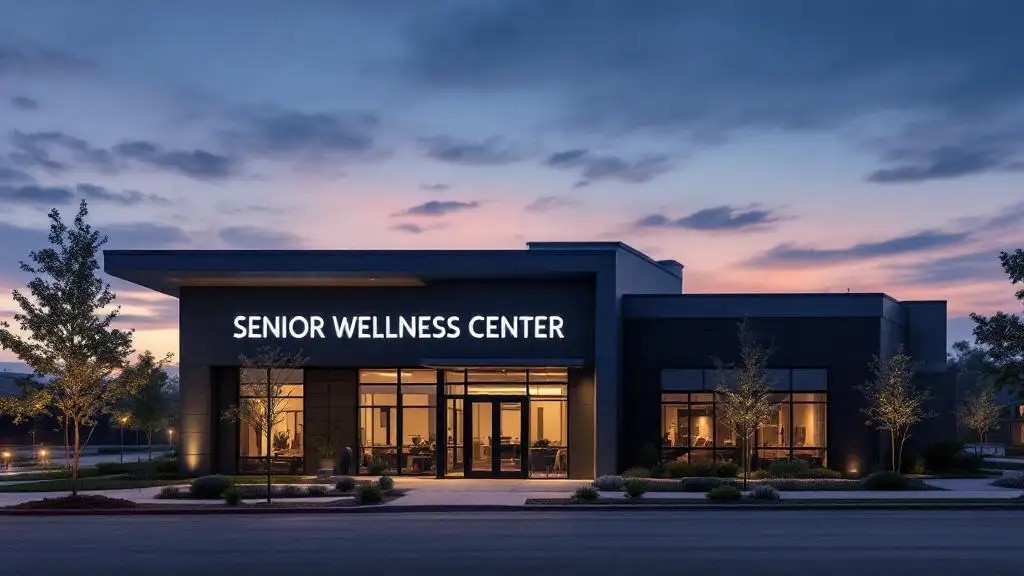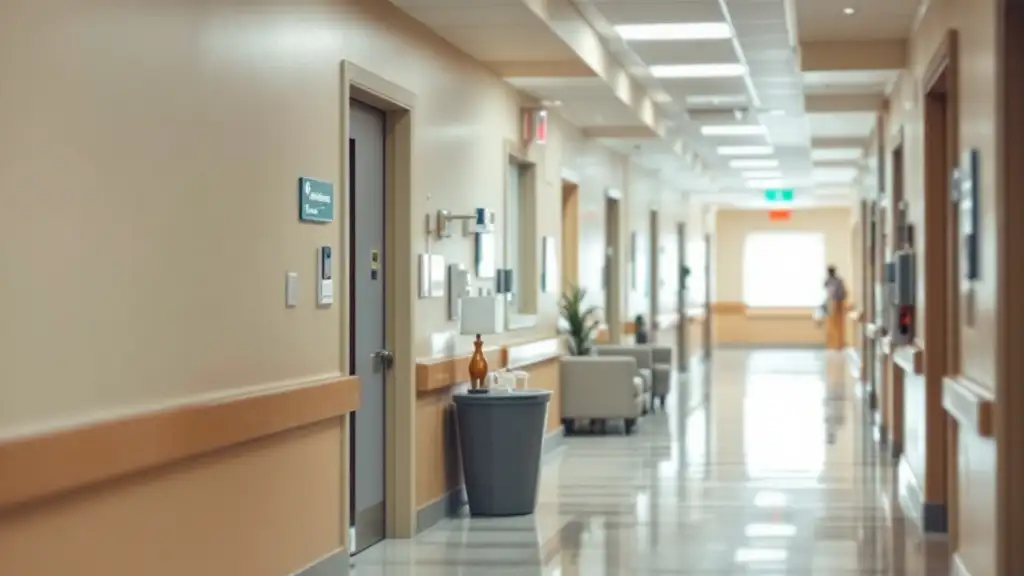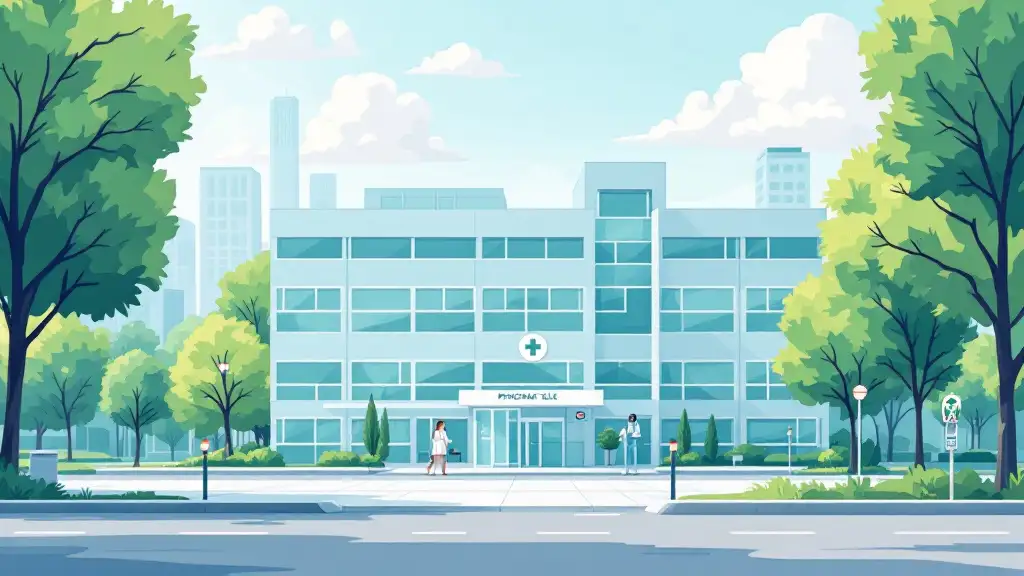Understanding the Scope and Complexity of Treatment Resistance in Older Adults
As the global population ages, mental health disorders in older adults pose increasing challenges to clinicians. Treatment resistance in this demographic, especially in conditions like depression and anxiety, is complex due to biological, psychological, social, and medical factors. This article explores the prevalence, assessment, management strategies, and emerging research aimed at overcoming treatment resistance among the elderly, emphasizing a multidisciplinary, personalized approach.
Epidemiological Landscape of Treatment Resistance in Geriatrics
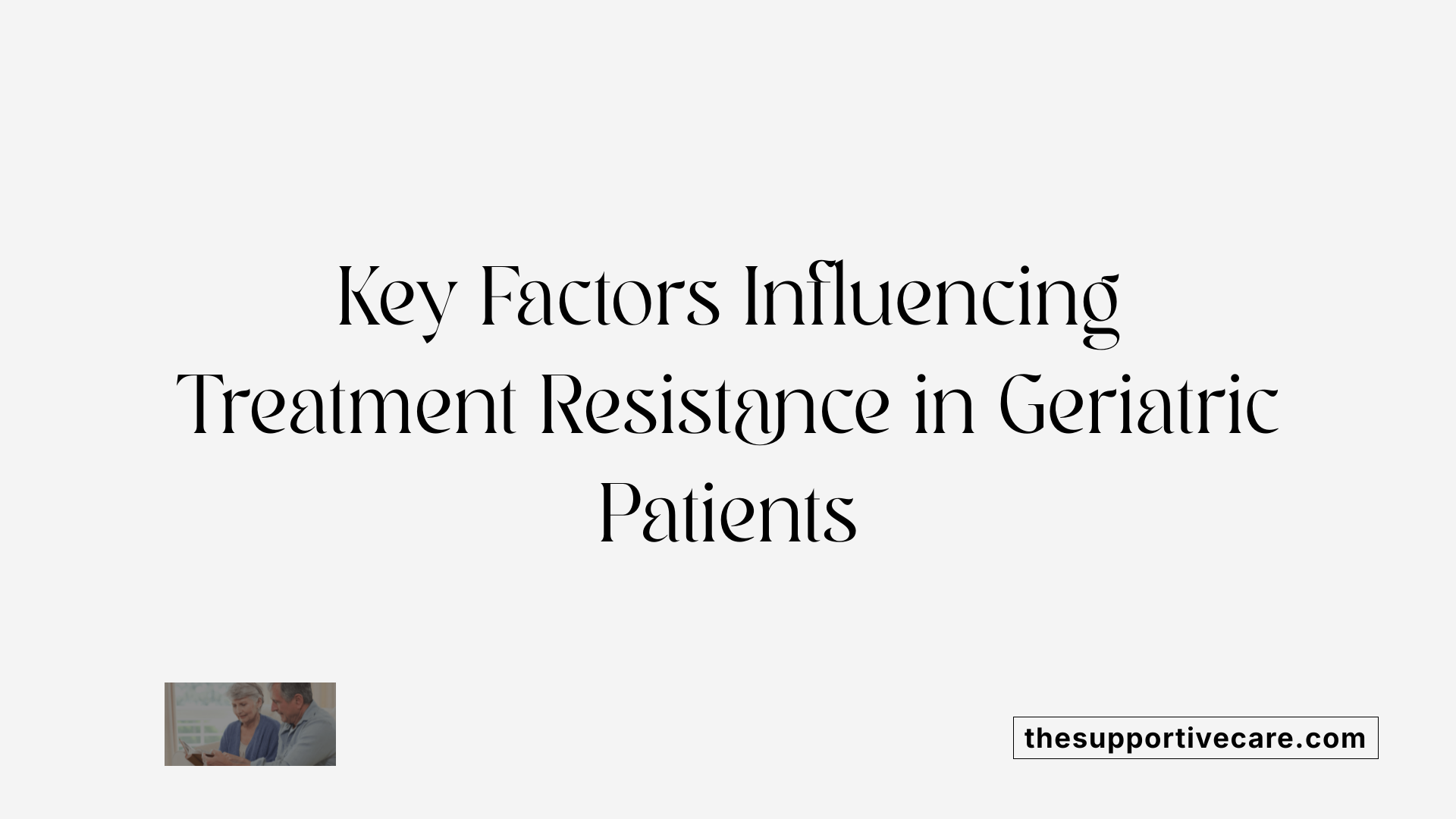
What epidemiological data exist regarding the prevalence and characteristics of treatment resistance among older adults?
Understanding how many elderly patients suffer from treatment-resistant depression (TRD) and other mental health conditions is crucial for effective planning and intervention. Epidemiological studies show that the prevalence of treatment-resistant depression (TRD) in older populations varies depending on diagnostic criteria, setting, and population studied.
In community settings, the rates of depression are generally lower, but within clinical environments, especially among patients requiring specialized care, the prevalence can be significantly higher. Overall, approximately 17.7% of older adults with late-life depression (referred to as TRLLD) are affected by treatment resistance. This means that nearly one in five patients with depression in this age group does not respond adequately to standard treatments.
Certain severe, recurrent, or psychotic depressive cases tend to have even higher resistance rates, reaching about 30%. These figures highlight the complexity and the need for tailored treatment plans for these subgroups.
Additional epidemiological insight reveals that about 6-7% of the elderly population in the United States experience treatment-resistant depression. These data points derive from large-scale surveys and clinical studies, such as the STAR*D trial and others focused on geriatric mental health, providing a broad perspective on the prevalence.
Key factors influencing the likelihood of resistance include demographic and clinical characteristics. Women are more prone to developing treatment resistance, especially with recurrent or more severe depression. The presence of psychosis and a higher risk of self-harm further complicate treatment responses.
Conversely, some factors seem protective. Older age, particularly those over 85, Black ethnicity, and cognitive impairments tend to be associated with lower rates of treatment resistance, possibly due to differences in diagnosis, treatment pathways, or reporting.
Physical health comorbidities significantly impact treatment outcomes. For example, hypertension increases the likelihood of resistance, with an adjusted odds ratio of 2.20, indicating that hypertensive patients are more than twice as likely to experience TRD. The presence of medical illnesses like diabetes or neurological conditions such as Parkinson’s disease can also interfere with depression treatment efficacy.
Response rates to initial antidepressant therapy in older adults vary broadly between 35% and 73%, depending on factors like medication choice, adherence, and comorbid conditions. These figures underline the importance of comprehensive assessment and personalized treatment strategies.
Summarizing these epidemiological insights, the overall prevalence of treatment-resistant depression in the elderly is approximately 6-7%, with higher rates among those with severe, recurrent, or psychotic profiles. The significant variability seen across studies and settings highlights the need for ongoing research, particularly focusing on identifying modifiable risk factors and optimizing treatment protocols.
| Data Point | Prevalence/Rate | Additional Details |
|---|---|---|
| TRLLD in community elderly | 17.7% | Based on population studies; varies with severity |
| Severe/psychotic/recurrent cases | up to 30% | Higher resistance in specified subgroups |
| General elderly population with depression | 6-7% | Estimated in U.S. based on epidemiological surveys |
| Response to initial treatment | 35-73% | Dependence on medication, adherence, and comorbidities |
| Factors increasing resistance | Female sex, recurrent depression, psychosis, high self-harm risk | Complex clinical profiles |
| Factors decreasing resistance | Older age (over 85), Black ethnicity, cognitive impairment | Possible biological or social factors |
| Medical comorbidities | Hypertension OR 2.20 | Significantly impacts treatment response |
This data underscores that treatment resistance in geriatrics is a multifaceted issue influenced by demographic, clinical, and biological factors. Recognizing these patterns assists clinicians in developing targeted strategies to improve outcomes for older adults facing persistent mental health challenges.
Psychological and Behavioral Dynamics

What are the psychological and behavioral factors contributing to treatment resistance in older adults?
Several psychological factors play a significant role in making depression more resistant to treatment among older adults. Negative thought patterns, such as persistent hopelessness or cynicism, can diminish motivation to adhere to treatments like medication or therapy. Cognitive distortions—faulty thinking styles—may also impair the recovery process by reinforcing feelings of helplessness.
Psychological trauma, whether recent or past, can exacerbate depression and reduce the effectiveness of standard interventions. Feelings of loneliness and social isolation are especially impactful, as they diminish social support and can intensify depressive symptoms, creating a cycle of worsening mood and withdrawal.
Low life satisfaction and unmet psychosocial needs further hinder engagement with treatment. These emotional and psychological states can also lead to poor compliance, as affected individuals may feel unmotivated to pursue recovery.
On the biological front, neuroanatomical changes, such as gray matter reduction in key brain regions involved in mood regulation, as well as neuroendocrine dysregulation—particularly hyperactivity of the hypothalamic-pituitary-adrenal (HPA) axis—are common in older adults with depression. These changes can decrease responsiveness to antidepressant treatments. Vascular lesions, like white matter hyperintensities, and systemic inflammation contribute to persistent depression by disrupting neuronal connectivity.
Social factors compound these challenges. Chronic physical illnesses, such as coronary heart disease or diabetes, often accompany depression in older adults, complicating management. Barriers to healthcare access, cognitive impairments, and sensory deficits can impede treatment adherence and continuity.
Age-related personality traits and past psychiatric history also influence treatment outcomes. For example, traits like suspicion, emotional withdrawal, or neuroticism can reduce engagement with therapeutic interventions. A history of multiple depressive episodes increases the likelihood of treatment resistance due to neurobiological and psychological vulnerabilities.
The interplay between psychological, biological, and social factors creates a complex resistance landscape. Older adults with depression often face barriers that require a comprehensive, individualized approach to treatment. Recognizing and addressing these multifaceted contributors is crucial for improving therapeutic outcomes in this vulnerable population.
| Factor Category | Specific Contributing Element | Impact on Treatment Resistance |
|---|---|---|
| Psychological | Negative thought patterns, cognitive distortions, trauma | Reduce engagement, impair motivation |
| Biological | Neuroanatomical changes, HPA axis hyperactivity, vascular lesions, inflammation | Decrease treatment responsiveness |
| Social | Loneliness, physical illnesses, healthcare barriers | Impede treatment adherence |
| Personality & History | Suspicion, emotional withdrawal, multiple episodes | Increase likelihood of resistance |
Understanding these intertwined factors helps clinicians develop more targeted, effective treatment strategies that address the underlying causes of resistance, improving the chances of remission and functional recovery in older adults.
Assessment and Diagnostic Strategies
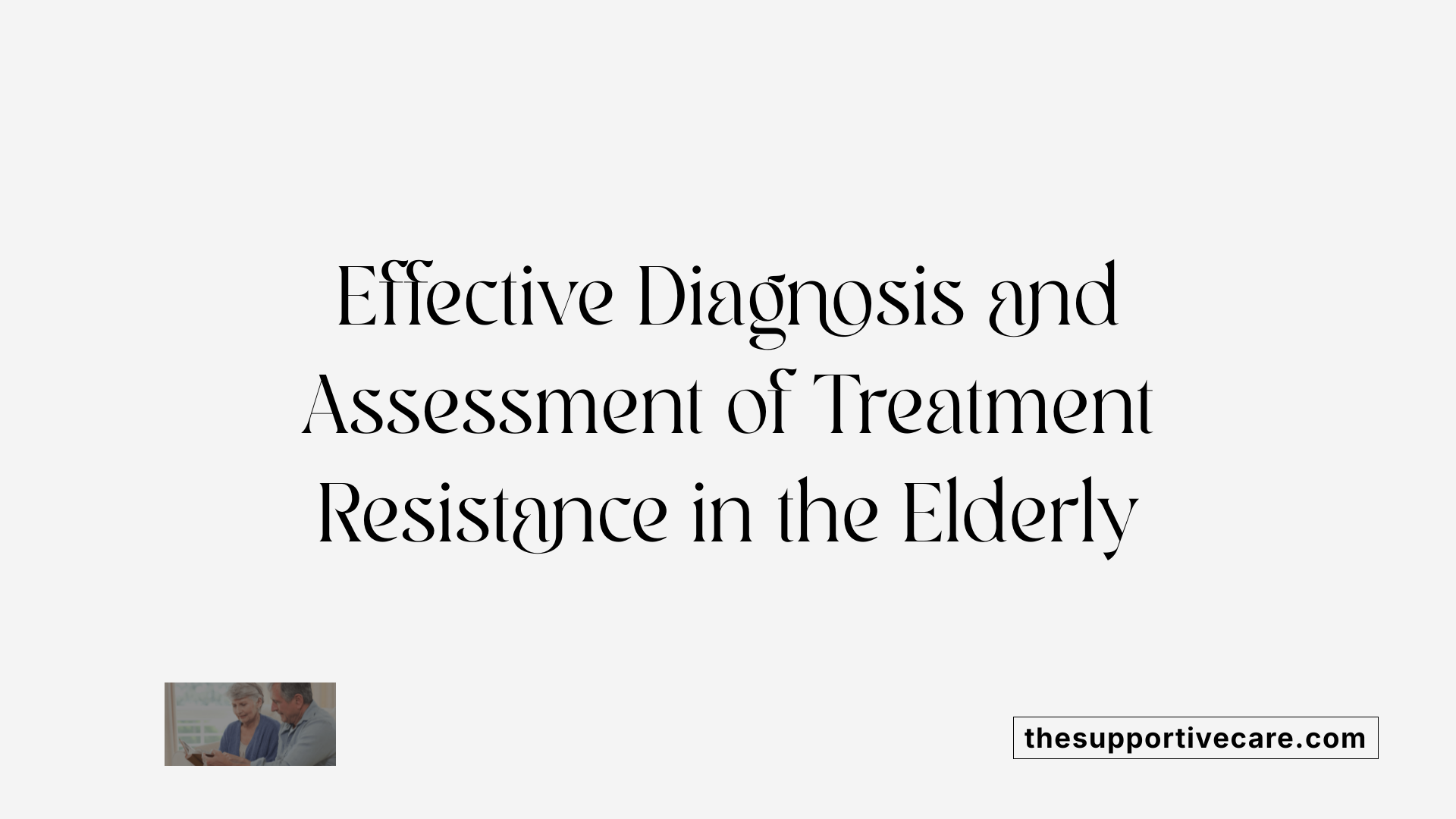
How is treatment resistance in psychiatric conditions diagnosed and assessed in elderly patients?
Diagnosing treatment-resistant depression and other psychiatric conditions in older adults begins with a thorough clinical assessment. Clinicians employ validated tools such as the Patient Health Questionnaire-9 (PHQ-9) and the Geriatric Depression Scale (GDS) to establish the presence and severity of depression. These scales help in tracking symptom changes over time and verifying whether ongoing symptoms truly reflect treatment failure.
Beyond standardized scales, a comprehensive evaluation includes detailed medical and psychiatric histories. It is vital to assess medication adherence carefully, as non-compliance can mimic treatment resistance. Reviewing coexisting medical conditions like diabetes, coronary heart disease, or neurological issues provides crucial context, as these can impact treatment outcomes.
In addition, clinicians must differentiate among various psychiatric diagnoses. For older adults, some symptoms might overlap with cognitive disorders, bipolar disorder, or schizoaffective disorder. Detecting suicidal ideation is essential for safety, and identifying conditions such as dysthymia or anxiety disorders that may affect depression management.
Treatment resistance is generally confirmed after adequate trial periods—typically at least 8 weeks—of evidence-based treatments like antidepressants or psychotherapy. If symptoms persist despite proper medication dosing, adherence, and sufficient trial duration, a diagnosis of treatment resistance can be made.
Assessment strategies often involve multidisciplinary teams, integrating primary care, psychiatry, and psychotherapy specialists. This approach ensures that all potential contributing factors are addressed.
When managing treatment resistance, clinicians may consider augmentation strategies—adding second-generation antipsychotics, lithium, or thyroid hormones—or switch medications if initial treatments are ineffective. For complex cases involving psychosis or cognitive impairment, referral to psychiatric specialists becomes necessary.
In some instances, advanced treatments like electroconvulsive therapy (ECT) or transcranial magnetic stimulation (TMS) are indicated, though their use in the elderly requires careful evaluation due to potential risks and comorbidities.
In summary, diagnosing and assessing treatment resistance in elderly psychiatric patients hinges on comprehensive, validated assessment tools, meticulous clinical evaluation, and consideration of individual health and social factors. Proper identification of treatment failure is crucial for tailoring effective, personalized management plans.
Management of Treatment-Resistant Conditions: Pharmacological and Non-Pharmacological Approaches
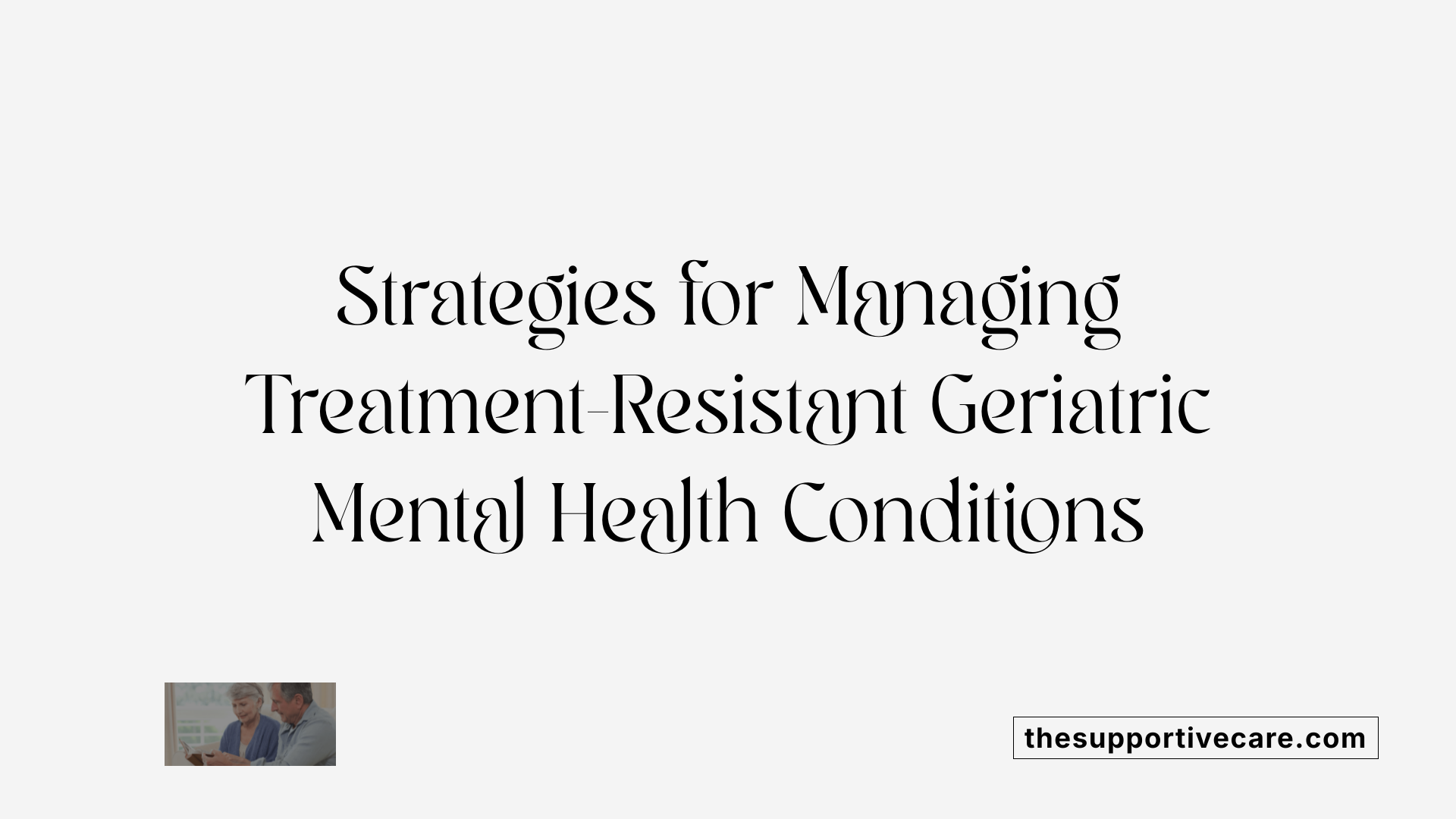
How are medication and therapy options managed for treatment-resistant cases in elderly populations?
Managing treatment-resistant depression (TRD) in older adults requires a comprehensive and individualized approach. It begins with thorough reassessment using validated tools such as the PHQ-9 and Geriatric Depression Scale to confirm diagnosis and gauge severity.
A key aspect is the careful evaluation of coexisting medical conditions, which can influence medication choices and treatment efficacy. Conditions like vascular disease, diabetes, and neurological disorders often complicate management, requiring tailored strategies.
Pharmacologically, clinicians typically optimize existing antidepressant therapy by ensuring correct dosing and adequate duration. First-line treatments generally include selective serotonin reuptake inhibitors (SSRIs) or serotonin-norepinephrine reuptake inhibitors (SNRIs), with vigilant dose adjustments to minimize adverse effects like falls or cardiac issues.
When initial treatments fail, augmentation strategies are commonly employed. These include adding agents such as lithium, thyroid hormones, or atypical antipsychotics like quetiapine or aripiprazole. Switching medication classes—either to other antidepressants or different pharmacologic groups—also forms part of the management plan.
Nonpharmacological options are equally important. Psychotherapy, especially cognitive-behavioral therapy (CBT), needs adaptation for older populations, emphasizing relaxation, mindfulness, and addressing cognitive impairment when present.
Severe or resistant cases may warrant advanced interventions such as electroconvulsive therapy (ECT), which remains a highly effective modality for acute depression in the elderly. Transcranial magnetic stimulation (TMS) has emerged as a non-invasive alternative. Emerging treatments like esketamine are being studied but require further evidence regarding safety in older adults.
A multidisciplinary, holistic care approach is vital. This involves coordination among primary care providers, psychiatrists, psychologists, social workers, and caregivers to address social, medical, and psychiatric needs.
Regular monitoring of treatment response and side effects ensures safety and efficacy, adjusting therapies as needed.
The ultimate goal is to craft a treatment plan balancing effectiveness and tolerability, incorporating both pharmacologic and psychological strategies, to improve quality of life for elderly patients with resistant depression.
| Treatment Strategy | Typical Interventions | Additional Considerations |
|---|---|---|
| Pharmacological Optimization | SSRI, SNRI titration, medication switching, augmentation (lithium, thyroid hormones) | Dose careful adjustments, minimize adverse effects |
| Nonpharmacological Treatments | CBT, ECT, TMS, emerging therapies like esketamine | Adapt therapy to cognitive status, monitor cognitive function |
| Coordinated Care | Multidisciplinary team involvement, regular reassessment | Collaboration enhances outcomes, addresses social and medical needs |
| Monitoring and Adjustment | Regular assessment tools, side effect management | Ensures safety, responsiveness to treatment changes |
This integrated approach enables tailored management, improving outcomes for older adults facing resistant depression.
Challenges and Considerations in Treatment Resistance Management
What specific challenges and considerations must be addressed when treating treatment-resistant mental health conditions in older adults?
Managing mental health conditions that do not respond to initial treatments in older adults presents numerous unique challenges. One of the primary issues involves the physiological changes that accompany aging. Older adults experience altered pharmacokinetics and pharmacodynamics, affecting how drugs are absorbed, distributed, metabolized, and excreted. These changes often result in increased sensitivity to medications, raising the risk of adverse effects such as falls, cognitive impairment, and cardiovascular problems.
Polypharmacy is a common concern, with many elderly patients taking multiple medications for various comorbidities. This complex medication regimens increase the risk of drug-drug interactions and side effects, which can further hinder treatment response. For example, certain medications used for comorbid conditions like Parkinson’s disease or COPD can interfere with antidepressant efficacy or exacerbate psychiatric symptoms.
Diagnosing and differentiating symptoms in older adults can be complicated. Atypical presentations—such as somatic complaints, cognitive changes, or social withdrawal—may overlap with normal aging or other medical illnesses. This overlap can lead to underdiagnosis or delayed treatment, reducing the chances of successful management.
When addressing treatment-resistant cases, clinicians must consider dose adjustments to minimize adverse effects while maintaining efficacy. Strategies like medication switching or augmentation—adding agents such as lithium, second-generation antipsychotics, or thyroid hormones—are common. Carefully monitored therapeutic drug testing ensures optimal dosing tailored to the patient’s genetic makeup, metabolic capacity, and overall health status.
Nonpharmacological therapies represent vital components of a comprehensive approach. Psychotherapies such as cognitive-behavioral therapy (CBT) may need adaptation for cognitive impairment or sensory deficits. Biophysical modalities like electroconvulsive therapy (ECT), transcranial magnetic stimulation (TMS), and vagus nerve stimulation (VNS) are considered, especially in severe or refractory cases, although evidence of safety and efficacy in very old populations requires ongoing research.
Addressing social determinants—like loneliness, social isolation, and functional decline—is crucial to improve engagement and adherence. Interventions including social activities, caregiver support, and rehabilitation programs can promote better outcomes.
An emerging frontier involves personalized medicine approaches, such as utilizing genetic and biomarker data to guide medication choice and dosing. This can help optimize treatment response while reducing the risk of adverse effects.
In summary, managing treatment resistance in older adults demands a nuanced, multidisciplinary approach that considers age-specific physiological changes, comorbidities, social factors, and individual treatment responses. Combining pharmacological optimization with tailored psychological and physical therapies, along with close monitoring, offers the best chance for improving mental health outcomes in this vulnerable population.
Innovative and Emerging Treatment Approaches
What current research and are there emerging treatments for mental health treatment resistance in geriatric patients?
Research into managing treatment-resistant depression (TRD) in older adults is rapidly evolving. Clinicians and researchers are exploring a variety of novel strategies that may improve outcomes for this vulnerable population.
One promising area is the development of advanced neuromodulation techniques. Deep brain stimulation (DBS) and vagus nerve stimulation (VNS) are two modalities under active investigation. DBS involves implanting electrodes in specific brain regions to modulate neural circuits associated with depression. Similarly, VNS, which stimulates the vagus nerve via an implanted device, has shown potential in reducing depressive symptoms in some patients. These approaches are undergoing clinical trials, aiming to assess their safety and efficacy specifically in older adults.
Rapid-acting agents represent another exciting frontier. Ketamine, administered as an infusion or nasal spray, has demonstrated fast antidepressant effects, often within hours to days, making it suitable for severe cases or those with high suicide risk. Ongoing research seeks to understand optimal dosing, duration, and long-term safety in elderly populations.
Besides pharmacological breakthroughs, new techniques like ultra-brief unilateral electroconvulsive therapy (ECT) are being refined. This version of ECT aims to reduce cognitive side effects while maintaining efficacy. Such innovations could make ECT more acceptable and accessible for older patients.
Personalized medicine is increasingly influencing treatment for geriatric depression. Advances in neuroimaging, such as functional MRI, help identify individual brain activity patterns linked to depression and treatment response. Combining imaging findings with genetic information—pharmacogenetics—allows clinicians to tailor therapy, choosing medications or neuromodulation approaches best suited for each patient.
Clinical trials are actively assessing these interventions. Recent studies report positive response and remission rates with novel approaches like transcranial magnetic stimulation (TMS), DBS, and VNS. In addition, combining these therapies with traditional treatments can further enhance response.
In summary, current research and emerging treatments for TRD in older adults include neuromodulation techniques such as DBS and VNS, fast-acting agents like ketamine, and the integration of personalized medicine guided by neuroimaging. These advances aim to increase response rates, reduce side effects, and ultimately improve quality of life for geriatric patients facing challenging depression resistant to conventional therapies.
| Treatment Modality | Description | Current Status | Benefit for Older Adults |
|---|---|---|---|
| Deep Brain Stimulation (DBS) | Electrical stimulation of specific brain regions | Under clinical trials | Potentially effective with adjustable parameters |
| Vagus Nerve Stimulation (VNS) | Electrical stimulation of vagus nerve | Approved for epilepsy; being studied for depression | May offer rapid symptom relief |
| Ketamine | NMDA receptor antagonist with rapid antidepressant effects | Approved for acute use; ongoing safety studies | Fast onset beneficial in severe cases |
| Ultra-brief ECT | Modified ECT with reduced cognitive side effects | In development | Enhanced tolerability with maintained efficacy |
| Neuroimaging & Pharmacogenetics | Using brain scans and genetic testing to personalize therapy | Emerging | Increased response likelihood |
Efforts continue to optimize these therapies, address safety concerns, and make them accessible, promising a brighter future for managing treatment resistance in geriatric depression.
Moving Forward: Integrating Research and Clinical Practice to Overcome Resistance
Addressing treatment resistance in older adults demands an integrative approach that combines current evidence-based practices with innovative research. Emphasizing personalized, multidisciplinary care and remaining adaptive to emerging therapies can substantially improve outcomes. Combatting ageism, optimizing pharmacological regimens, employing neuromodulation, and integrating psychosocial interventions are pivotal. As research advances with neuroimaging, genetic profiling, and novel neuromodulation techniques, clinicians will be better equipped to tailor interventions, reduce morbidity, and enhance quality of life for this vulnerable population. The future of geriatric mental health care lies in coordinated efforts that bridge science and practice, ensuring that resistance does not hinder effective recovery.
References
- Treatment-Resistant Depression in Older Adults - PMC
- Managing Treatment-Resistant Anxiety Disorders in Older ...
- Mental health care for older adults: recent advances and ...
- MANAGEMENT OF TREATMENT RESISTANCE IN THE ...
- Redirecting Resistance
- Treatment-Resistant Geriatric Depression: Augmenting or ...
- How Common Is Resistance to Treatment in Recurrent ...








